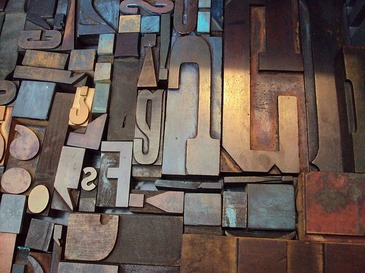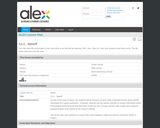
This resource from the New York Times contains 301 prompts and connections for student discussion and arguementative writing.
- Provider:
- New York Times
- Author:
- Michael Gonchar
- Date Added:
- 06/24/2019


This resource from the New York Times contains 301 prompts and connections for student discussion and arguementative writing.

Students work collaboratively to research and record information about different spinoffs of space exploration. Using the information they find, students then write a script to be produced into a podcast or vodcast.

In this lesson, students are introduced to the vocabulary of film as they go through the process of creating a short original film. This unit provides instruction on key aspects of digital video filmmaking: plotting, script, storyboarding, camera work (shots, angles), and editing (transitions, title, credits, visual effects, sound effects, etc.). Once students are familiar with the techniques and terms introduced in this lesson, they are able to use their new skills to bring other content areas to life through filmmaking.

This resource is to help students learn how to sequence events in story.

This resource is a poster of the functions of the 3 branches of government.

Students read a passage and answer questions based on the passage. An answer key is included.

Students will listen to a close reading of The 3 Little Pigs over the course of 3 days. (Many versions are accessible via NC Kids Digital Library. Teacher discretion as to the story version. Personal copy or online versions can be used.) After each read aloud, students will have the opportunity to engage in The Engineering Design Process to create a new dwelling using materials of varying physical properties. Students will write to tell about their new dwelling design using sentence frames and an anchor chart for support. Finally, students will present their new dwellings and read their informational writing to reflect their knowledge of physical properties. Student informational writing should reflect physical properties such as size, color, shape, texture, weight and flexibility per the NC Kindergarten Science Standards.

This graphic organizer can be used with any informational text to determine the author’s point of view. Students will use this graphic organizer to determine the topic of a text, the author’s point of view of a text, provide supporting details, and state their own opinion of a text. This could be used with a tech tool where students can draw or type directly on the document (Nearpod, Peardeck, Seesaw, Etc.)

This graphic organizer can be used with any informational text to determine the author’s point of view. Students will use this graphic organizer to determine the topic of a text, the author’s point of view of a text, provide supporting details, and state their own opinion of a text. This could be used with a tech tool where students can draw or type directly on the document (Nearpod, Peardeck, Seesaw, Etc.)

This graphic organizer can be used with any informational text to determine the author’s point of view. Students will use this graphic organizer to determine the topic of a text, the author’s point of view of a text, provide supporting details, and state their own opinion of a text. This could be used with a tech tool where students can draw or type directly on the document (Nearpod, Peardeck, Seesaw, Etc.)This is a link to the same graphic organizer but in Google Slides. The teacher could assign it in Google Classroom for the students to respond to. Google Slides Organizer

This resource can be used through Google Slides or Peardeck. The Mini-Lesson will cover the following “I Can” Statement.I can use key details to determine the central message of a myth

This resource can be used through Google Slides or Peardeck. The Mini-Lesson will cover the following “I Can” Statement.I can determine the key details in a myth.

This resource can be used through Google Slides or Peardeck. The Mini-Lesson will cover the following “I Can” Statement.I can use key details to determine the lesson of a myth.

This resource can be used through Google Slides or Peardeck. The Mini-Lesson will cover the following “I Can” Statement.I can use recount a myth using key details and the central message.

9 minute instructional video with examples and definitions of verbal irony, situational irony, and dramatic irony.

Read the book Mr. Ferris and his Wheel. Make sure to draw attention to the shapes used in the creation of a ferris wheel. Students will work in small groups to design and create a free standing, spinning wheel.

In this unit, students will be introduced to poetry. Students will learn about the different types of poetry characteristics through the use of poetry books, prezi presentations, music, and spoken word.

3 x 3 Vocabulary Challenge
Use within any subject
Need a bank of at least 10 words from a similar subject.
Students will put 9 words randomly in the 3x3 grid.
Challenge: Make a sentence using each word in row 1. Challenge students to make sentences for each row and column in the 3x3 grid.
Can be done collaboratively, or individual. Nice to mix it up!

This parent guide supports parents in helping their child at home with the 4th grade ELA content. Within the folder you will access Parent Guide PDFs in FIVE Languages: Arabic, English, Hindi, Spanish, and Vietnamese to help on-going communication with caregivers.

This unit combines nonfiction reading, biographies, Henry Ford, and Michigan history into one unit. It covers many informational reading standards and Michigan social studies standards all together.